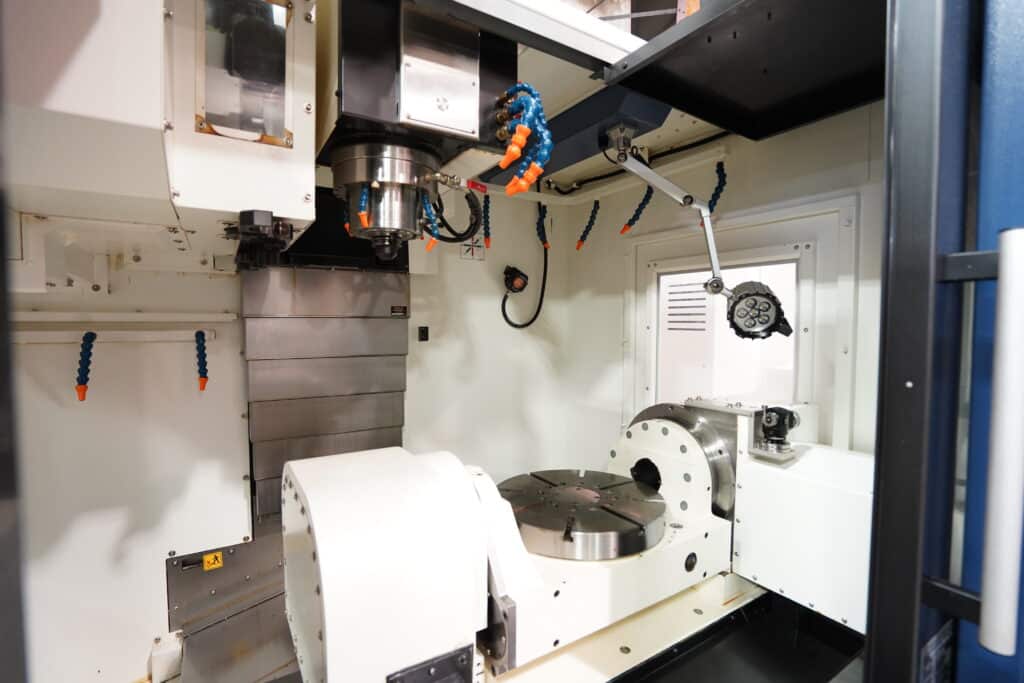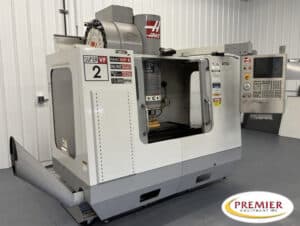One of the most important parts to look at when purchasing a used CNC machine is the spindle. The spindle is the heart of any new or used CNC machine because it cuts or machines the workpiece. Precision, efficiency and longevity of the machine depend on a healthy spindle. Below is a complete guide on how to determine the health of a CNC machine spindle, what to look for in terms of wear and what tests to run.
Understanding the Importance of the Spindle
A spindle is a complex assembly of bearings, motor, etc. Therefore, it is subjected to high speeds, loads as well as temperatures and is prone to wear and tear. Reduced accuracy, increased vibration, and machine downtime are all possible results of a malfunctioning or worn out spindle.
A thorough visual inspection of your CNC machine’s spindle is critical to keeping your machine running optimally and to prevent catastrophic failures.
Here’s a structured approach to guide you:
Examine for Signs of Wear
- Bearings: Look for rust or corrosion or having too much play. The spindle rotational accuracy depends on bearings.
- Shaft: Scoring, pitting, or other damage which could compromise functionality should be looked for.
- Housing: Look for evidence of leakage, rust or deterioration which may mean that there is something wrong underneath.
- Cooling System: Make sure it’s there and working, and not leaking.
Verify Alignment
Check that the spindle is properly aligned with the bed and many others. Uneven wear and performance are caused by misalignment.
Regular visual inspections will point out issues early on, so that the CNC machine can be safe and efficient to run.
Performance Tests
Just visual inspections alone, however, are not enough to determine spindle health; several performance tests are required for a complete evaluation.
Vibration Analysis
Excessive vibration is an indication of imbalance, misalignment or bearing wear and vibration analysis is a key method for spindle condition assessment. In order to do this test, use a vibration analyzer and measure vibration levels at various speeds and compare them to manufacturers specifications, or some industry standard. Vibration levels deviations can point out potential faults before they cause machine performance problems.
Run-Out Test
The run out test measures the deviation from that perfectly circular movement, hence that of its rotation accuracy. By performing radial and axial run-out tests, we can get a very detailed picture of any eccentricity or wobble. Checking for even minor inconsistencies with a dial indicator, or an advanced run out measuring device, can detect if they will affect the machining precision.
Temperature Check
The spindle’s temperature must be monitored since temperature rise is an indication of bearing wear and/or lubrication related problems. The temperature of the spindle bearings and housing should be measured, during operation, with an infrared thermometer. Compare with the manufacturer’s recommended temperatures and if you have any significant differences you should consider immediately maintenance.
Load Testing
Load testing is used to test the spindle’s performance in a real world operating environment. You can measure the spindle’s speed, vibration and temperature responses by applying a controlled load. With this test, you can see if there is any problem with the spindle’s power output or bearing capacity, and it will tell you if the spindle is capable of performing under the load of regular operation without sacrificing performance.
These performance tests work together to give a complete look at spindle health and allow for early detection of problems, as well as a proactive maintenance approach for CNC machinery.
Functional Tests
To test the performance of your CNC machine’s spindle under different operating conditions, functional tests must be conducted on your CNC machine’s spindle. Key tests include:
1. Speed Test
Objective: Check the spindle to see that it can reach and hold to its rated speed.
Procedure:
- Tell the spindle to go to its maximum rated speed.
- Find out how long it takes to reach full speed.
- Keep an eye out for any large speed fluctuations in operation.
Considerations: Inconsistencies may be related to the spindle drive system or motor.
2. Repeatability Test
Objective: Consequently the spindle’s consistency and accuracy in multiple operations are assess.
Procedure:
- Repeat a simple machining operation.
- Critical dimensions of each machined parts are measured.
- Measurements are compared to determine that they are within acceptable tolerances.
Considerations: Problems with spindle alignment or mechanical wear may be indicated by variations.
3. Tool Change Test
Objective: The ATC and the spindle tool holding mechanism are evaluated for functionality.
Procedure:
- Use the ATC to perform multiple tool change cycle.
- Watch the process and be smooth and precise.
- Check the tool holder and spindle interface for wear or damage.
Considerations: Machining accuracy can be effected by issues during tool changes; tooling failure, or the need for maintenance, of the ATC or spindle components.
Performing these functional tests regularly keeps your spindles running at peak performance, which results in consistent machining quality, and extends the life of your CNC equipment.
Maintenance Records and History
Apart from testing CNC machine performance, the last major aspect in a spindle health assessment is to review a CNC machine’s maintenance records and history.
Review Maintenance Logs
Keep track of the machine’s maintenance logs and see if you can access machine’s maintenance logs, and see what happened with the past spindle repairs, replacements and other maintenance activities. This information can show you where you have recurring issues, or patterns, that may affect your current spindle performance.
Consult Previous Operators
Contact former operators or maintenance people about any spindle problems they ever had. Although logs can tell us a lot about issues in the system, firsthand experiences offer valuable context and bring to pictures potential areas of concern that might not be obvious in a log alone.
Performance test results, combined with a comprehensive review of maintenance history and operator feedback, provides a more accurate picture of the condition of the spindle and the actions that can be taken to ensure maximum performance of the machine.
Additional Resources
For a more detailed understanding of spindle health assessment, here are some additional resources:
- ISO 230-7: This international standard defines the guidelines for testing the geometric accuracy of CNC machines, including spindle performance, in 2015.
- AGMA Standards: Standards on gear and bearing performance relevant to spindle health are published by the American Gear Manufacturers Association (AGMA).
- Manufacturer’s Documentation: Specific guidelines to test and maintain the spindle are always available from the manufacturer’s documentation.
Conclusion
Determining the health of a used CNC machine’s spindle is a very involved process involving visual inspections and detailed performance testing. Following these steps will help you decide on the condition as well as probable life of the spindle. A healthy spindle is critical to the entire CNC machine and its longevity.
Regardless of whether you’re a seasoned machinist or you’re new to the CNC machining world, learning how to evaluate spindle health can save you time, money and frustration in the long run. Make sure to always test and maintain your CNC machine thoroughly to run it at the best.



